Chapter notes: Money | Mathematics Class 3 ICSE PDF Download
Introduction
The chapter "Money" introduces students to the concept of money used in India, which includes rupees and paise. It covers how to add and subtract small amounts of money, both in paise and rupees, with or without regrouping. Coins and currency notes are the two forms of money. In India, rupees are written as ₹, and paise are written as p. The chapter also teaches how to write rupees and paise together, create rate charts, and prepare simple bills. Through practical examples, students learn to handle everyday transactions and understand the importance of money in buying and selling. 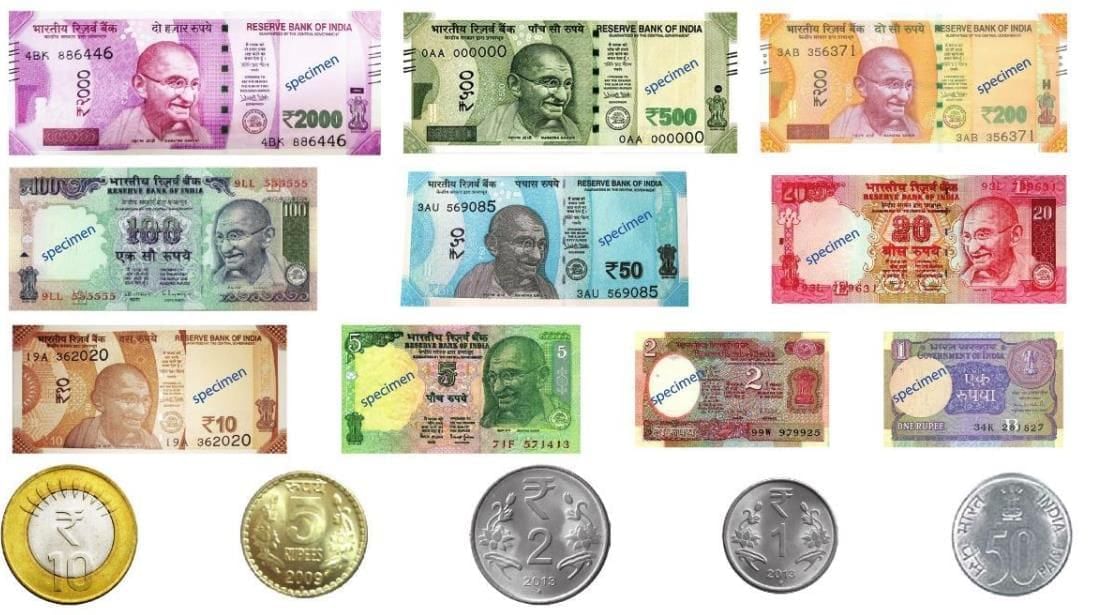
Addition and Subtraction of Paise
- Paise is a smaller unit of money used in India, written as 'p'.
- To add or subtract paise, write the amounts one below the other.
- Add or subtract paise like regular numbers, aligning them properly.
- Always write single-digit paise with a zero in front (e.g., 5p as 05p).
- Example: Adding 25p and 50p gives 75p.
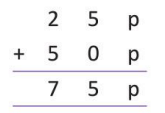
- Example: Subtracting 35p from 45p gives 10p.
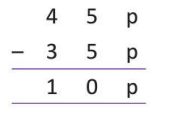
Addition and Subtraction of Rupees
- Rupees are the main unit of money in India, written as '₹'.
- Add or subtract rupees like regular numbers, aligning them properly.
- Example: Adding ₹10 and ₹5 gives ₹15.
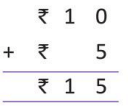
- Example: Subtracting ₹15 from ₹60 gives ₹45.
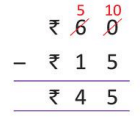
Writing Rupees and Paise
- Rupees and paise are written together with a dot separating them.
- The dot is placed before the last two digits, which represent paise.
- Examples:
- 5 rupees and 30 paise is written as ₹5.30.
- 11 rupees and 05 paise is written as ₹11.05.
- 10 rupees is written as ₹10.00.
- 220 rupees and 10 paise is written as ₹220.10.
- 925 rupees and 05 paise is written as ₹925.05.
Addition of Rupees and Paise
- Use two columns: one for rupees and one for paise.
- Add paise first, then add rupees.
- If paise total is 100 or more, convert 100p to ₹1 and carry over to the rupees column.
- Example:Adding ₹2.40 and ₹3.50:
- Add paise: 40p + 50p = 90p.
- Add rupees: ₹2 + ₹3 = ₹5.
-
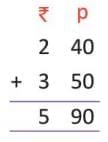
- Total: ₹5.90.
- Example: Adding ₹12.35 and ₹15.70:
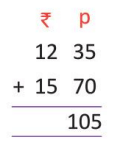
- Add paise: 35p + 70p = 105p (₹1 + 5p).
- Carry over ₹1 to rupees.
- Add rupees: ₹12 + ₹15 + ₹1 = ₹28.
- Total: ₹28.05.
- Alternatively, align amounts with dots and add like regular numbers.
Subtraction of Rupees and Paise
- Use two columns: one for rupees and one for paise.
- Subtract paise first, then subtract rupees.
- If paise are not enough to subtract, borrow ₹1 (100p) from the rupees column.
- Example: Subtracting ₹2.40 from ₹3.50:
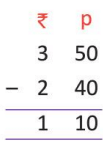
- Subtract paise: 50p - 40p = 10p.
- Subtract rupees: ₹3 - ₹2 = ₹1.
- Total: ₹1.10.
Word Problems
- Solve word problems by adding or subtracting amounts as needed.
- Example: Aashima bought cookies for ₹22.75, chips for ₹10.00, and juice for ₹15.50. How much total she spent?
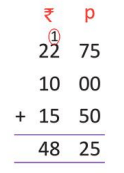
- Add: ₹22.75 + ₹10.00 + ₹15.50 = ₹48.25.
- Total spent: ₹48.25.
Making Rate Charts and Bills
- Rate Charts:
- A rate chart lists items, their quantities, and prices at a shop.
- It has four columns: serial number, item name, quantity, and price.
Example: For Raghav Stationery. Make a rate chart for the stationery items.
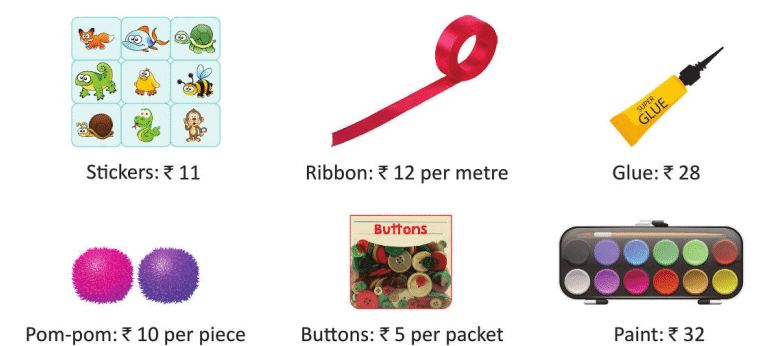
Solution:
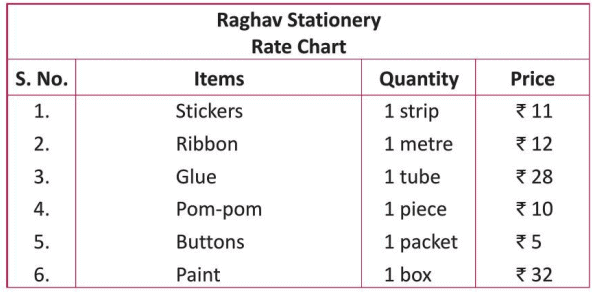
- Bills:
- A bill shows items bought, their quantities, prices, and total amount.
- It has five columns: serial number, item name, quantity, price, and amount (quantity × price).
- Total amount is written at the bottom.
Example: Rashita bought 2 sticker strips (₹11 each), 3 metres of ribbon (₹12 per metre), 4 pom-poms (₹10 each), and 5 packets of buttons (₹5 each). Make a bill for her purchase.
Solution:
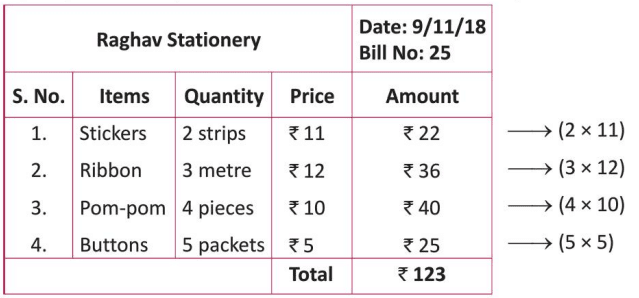
- Stickers: 2 × ₹11 = ₹22.
- Ribbon: 3 × ₹12 = ₹36.
- Pom-poms: 4 × ₹10 = ₹40.
- Buttons: 5 × ₹5 = ₹25.
- Total: ₹123.
|
67 docs|9 tests
|
FAQs on Chapter notes: Money - Mathematics Class 3 ICSE
| 1. What is the difference between paise and rupees in terms of value? |  |
| 2. How do you add rupees and paise together? |  |
| 3. How can you write amounts in rupees and paise correctly? |  |
| 4. What are some common word problems involving money for Class 3 students? |  |
| 5. How do you make a rate chart or bill? |  |
















